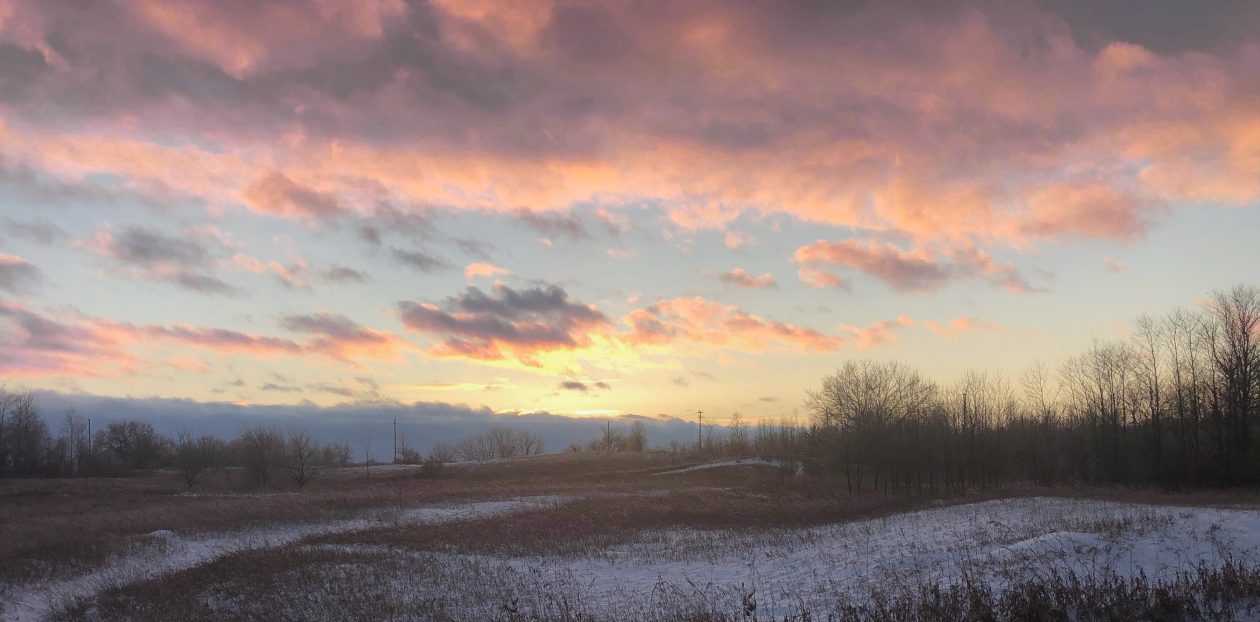It is hard to believe that there is life outside on a day when your cheeks will freeze in five minutes! The birds are huddled in evergreens, the squirrels curled up in their leafy beds and the mice and voles are buried deep under their blankets of snow and soil. Only the pushy crows and hungry hawks can be seen cutting through the skies….
I lie on the couch in front of a gentle fire with my dog Scout curled on my legs. I’m half watching an impossibly young, blonde couple looking for a house in Goa, India, and in other moments, the unending and maddening political analysis on CNN.
What would be better than going back in time, back to the summer and to one of my favourite places, my friend Jeff’s house in the Quebec countryside. Come with me as I show you his place, with gardens that are now relatively mature. Jeff invites me annually so I can swish around the gardens, point here and there, saying this needs to go here and something else needs to go here instead. He is a very patient man.
If you’re interested in earlier visits to this garden, go here, here and here.

The house’s blue mirrors the colour of the lake below. Jeff is working on the forest that descends to the water, culling the diseased and dead ones, thinning some to maximize the view but still give privacy and encouraging the “keepers”.
The monumental thyme steps have grown in and beckon the visitor to follow….a path that leads to a grassy landing at the backside of the house, held up by another beautifully constructed stone wall that holds the hillside.

The multi-stemmed Amur maple (Acer ginnala), which turns a rich shade of red in the fall and is bullet-proof in terms of disease and insect damage, is surrounded by the species form of Japanese forest grass, Hakonechloa macra. A few shaped golden cedars join the party but will likely be moved elsewhere as this form of forest grass grows quite tall and dwarfs them.

The dry-laid flagstone patio at the front of the house is a step down from the gravel road but is the perfect place to sit for tea or simply to enjoy the garden. Pots with bright annuals are perched about, lending the space intense colour. Indeed, primary colours abound in this new design — Jeff’s younger love of pastel colours has matured into a passion for depth and richness.

This raised bed, the first to be seen from the road, combines creeping sedums, Siberian cypress, Geranium ‘Rozanne’ and purple moor grass (Molinia caerulea), among others. The idea is for the plants here to be low or diaphanous, so they do not present a visual barrier to the other plantings.

The bristlecone pine (at right; Pinus aristata) provides structure and interest. A slow growing, beautiful, unique and ancient evergreen, it will over time reach great heights — but long after Jeff has kicked the bucket (sorry Jeff!)

The solidity and gorgeous texture of these stones are in glorious contrast to the plants above and adjacent. The mounded shrubs that bracket this step are lace shrub or cut-leaf Stephanandra (Stephanandra incisa ‘Crispa’), which will over time tumble down over the edges. They produce delicate white flowers in the early summer which attract the hum of bees and wasps; in autumn, the foliage turns a brilliant gold. Jeff’s bold colour choices in this circular bed include lilies, beebalm, yarrow, geranium, garden phlox (yet to bloom), persicaria (the garden-worthy type!) and Calamagrostis. The staked tree at the corner of the house is a young fringe tree (Chionanthus virginicus), which will produce white filigree blossoms before it matures in late spring, early summer. Hardy to Zone 3, it will provide an interesting feature and a tree for visitors to talk about long after they leave.
Thank you Jeff for letting me be a part of your beautiful countryside idyll! I can’t wait for next year……….

































































